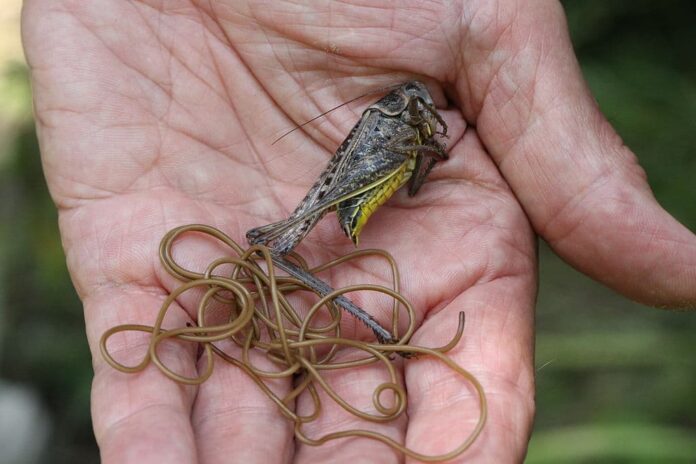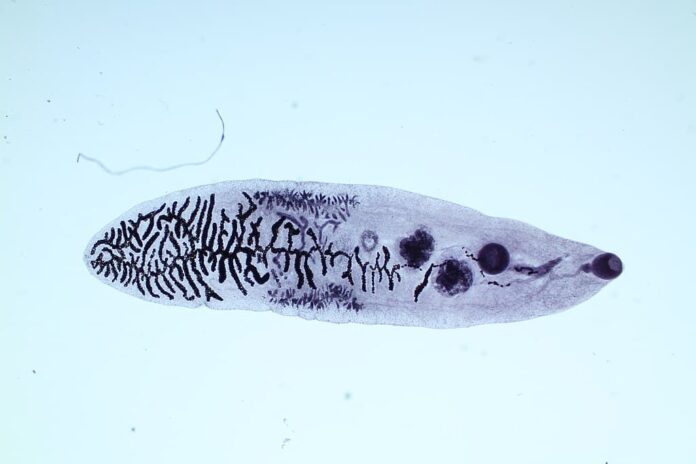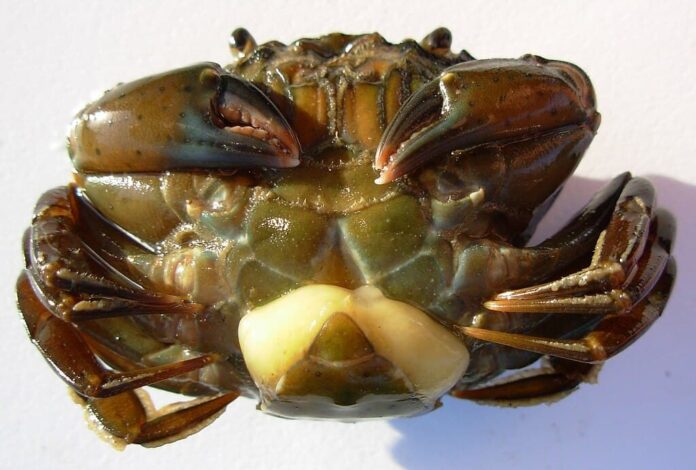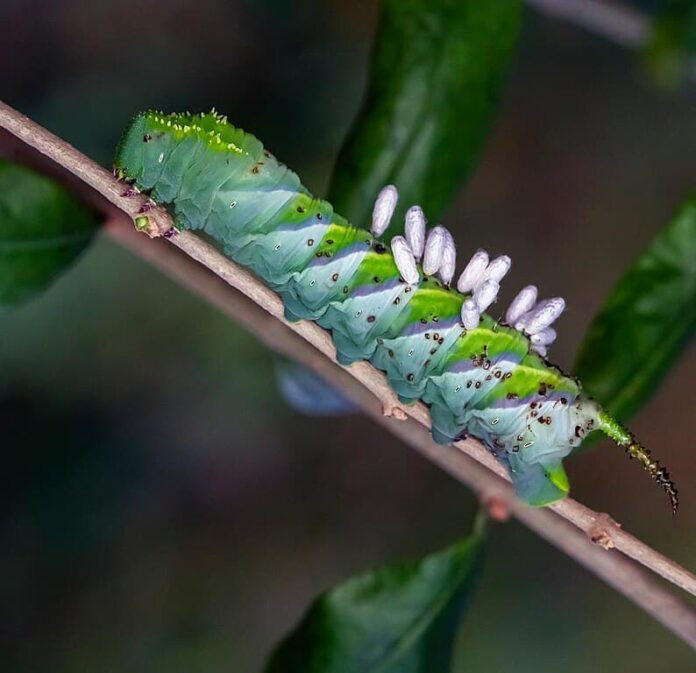Parasitoids are organisms that live in close association with their hosts before killing them eventually. Most parasitoids live inside the hosts, most of which are animals like insects or even mammals. They do not only feed on the hosts but also cause changes in behaviors in the hosts in their favor. Today, we are going to talk about the 5 most deadly parasitoids that prey on the lives of other animals. Let’s take a look at the list below and see if you know any of them.
1Horsehair Worm

Horsehair worms or Gordian worms are similar to nematodes but much longer and very thin. These worms live in wet areas and water alongside or in puddles and streams. They are also found in cisterns, domestic water supplies, livestock watering troughs, or evening swimming pools. Horsehair worms writhe slowly, contorting their hair-like bodies into intricate ball-shaped knots; hence the nickname Gordian worms. The adults of these parasitoids are free-living but their larvae are parasites of invertebrates, especially certain insects like beetles, cockroaches, crickets, grasshoppers, etc.
Adults mate in water then the females lay strings of eggs, and they will hatch between 2 weeks to 3 months. Within 24 hours of hatching, the larvae wait for the unfortunate target host to drink the water along with them. Once find themselves in the insect, the larvae will penetrate through the gut of the host where they grow. The larvae mature inside the host’s body, control its mind, and make the host jump into the water so that it can exit. Then the mature horsehair worm emerges from the host while the host is drowning, struggling for dear life before death.
So can a human get a horsehair worm? Luckily, these parasitoids are harmless to vertebrates so they cannot paralyze people, birds, livestock, or plants. Although it is possible for humans to ingest the worms, the side effects are only some mild discomfort.
2Lancet Liver Fluke

This is a parasitoid with 5 stages of development including miracidia, sporocyst, cercariae, metacercariae, and adult. It begins as free-swimming ciliated larvae before its transition from the eggs to the first intermediate host. The most common first host are snails where the parasitoids asexually produce more sporocysts inside. Then they move from the first host to the second and third host before they fully develop as adults. In the second stage, it takes about 90 days for the cercariae to fill the lung of the snail. The host snail then coughs balls of mucous full of cercariae in its slimy trail.
Ants gather those mucous balls as sources of moisture, and they swallow between 50 to 100 cercariae while doing so. The cercariae bore holes in the crop (an enlargement of the esophagus) of the ant without killing the host. Then the cercariae end up in the gaster of the ant where metacercariae develop. There, the metacercariae can control certain muscles of the ants and their movements. It makes the ant climb a blade of grass or other vegetation so that it can be accidentally eaten by a grazing animal. The final hosts are cattle, sheep, and other grazing animals whose livers become the final homes of the parasitoids. Among the 3 hosts, ants are the most unfortunate ones because their fate is destined to die once infected.
Can humans be infected by lancet liver fluke? Dicrocoelium dendriticum (lancet liver fluke) is a common parasite of ruminants that affects animals. However, there is another species known as Dicrocoelium hospes that is responsible for human infections in West Africa.
3Myrmeconema Neotropicum

Here you are looking at one of the bizarre parasitoids that can turn their host ants into ripe red berries. Not literally, but this parasitic species induces fruit mimicry in the tropical ant Cephaloyes atratus of South America. The ants have black abdomen, but the infection turns the ant gaster into something that resembles a red berry. This transformation attracts birds to feed on the ant that contains the eggs of the parasitoids. Then the birds defecate the eggs which will be picked up by the ants to feed their larvae. As the larvae pupate, the mature nematodes begin to reproduce inside the larvae gaster. The longer the ant develops, the redder the gaster becomes, then the cycle begins.
After the infection, the ants not only look more appetizing but also become more sluggish in their movements. On top of that, the infected ants move while holding their bright abdomens high in the air. Plus with the mimicry of the size, these play important roles in making them easy targets for birds to eat them. Inside those berry-red gasters are hundreds of parasite eggs, waiting to move to a new host.
4Parasitoid Wasp

You probably know about the parasitoid wasps that lay their eggs in or on the bodies of other arthropods. As the larvae hatch, they eat the host inside out which causes a painful death. The unfortunate hosts for these parasitoids are insects like beetles, bugs, caterpillars, flies, especially spiders. Female parasitoid wasps have a long sharp ovipositor at the tip of their abdomen. Some species can use hosts that are a lot larger than they are to lay an entire batch of eggs. Another process bizarre is known as Polyembryony where some wasp species can lay one egg that divides into many identical embryos. Then a whole mass of wasps can emerge from a host when only one egg was laid in it.
There are some common strategies that parasitoid wasps follow including ectoparasitic, endoparasitic, idiobiont, or koinobiont. Ectoparasitic is when the eggs develop outside the host while endoparasitic means the eggs develop inside the host. As for idiobiont, the larvae paralyze the host immediately but koinobiont refers to when the larvae allow the host to normally live their life. There are at least 500,000 species of parasitoid wasps, and many of them are actually beneficial to humans. Simply put, they help to naturally control agricultural pests in various regions around the world. This is why parasitoid wasps are one of the most common ways to use for pest control in certain regions.
5Rhizocephala

Parasitoids do not only affect land animals but also those who live in the water, and this is one of them. Rhizocephala are derived barnacles that parasite decapod crustaceans such as crabs, mantis shrimps, and more in freshwater and deep ocean. The parasitoid barnacles lack all internal organs, appendages, and segmentation except a few muscles, gonads, and nervous systems as adults. There are many species, and most of them start their lives as internal parasites in the abdomen of their hosts. After a few months, an externa pushes its way through the left side of the abdomen. At first, the bulge is globular then it elongates as it grows which changes into a cylindrical shape. Also, there is another part called “interna” which remains inside the host’s body. These internal past root-like tendrils wrap themselves around the host’s organs; hence the name Rhizocephala meaning root-head.
These roots wrap around certain organs of the body, and most of which are around the hepatopancreas of crustaceans. The concentration is to absorb nutrients from the host which also leads to the host’s inability to molt and nutrient loss. In some other species like Sacculina, they extend their roots to the brain and central nervous system of the crustaceans. This can simply lead to their ability to manipulate their host’s behavior to some extent. The parasitoids control the host’s mind and turn it into a babysitter to aerate and groom the barnacle’s brood. Sacculina has a lifespan that matches that of their hosts which is between 1 to 2 years. Normally, infected hosts become weaker as the parasite grows before they eventually die.
Related Post: Body Snatchers That Control The Host’s Minds




